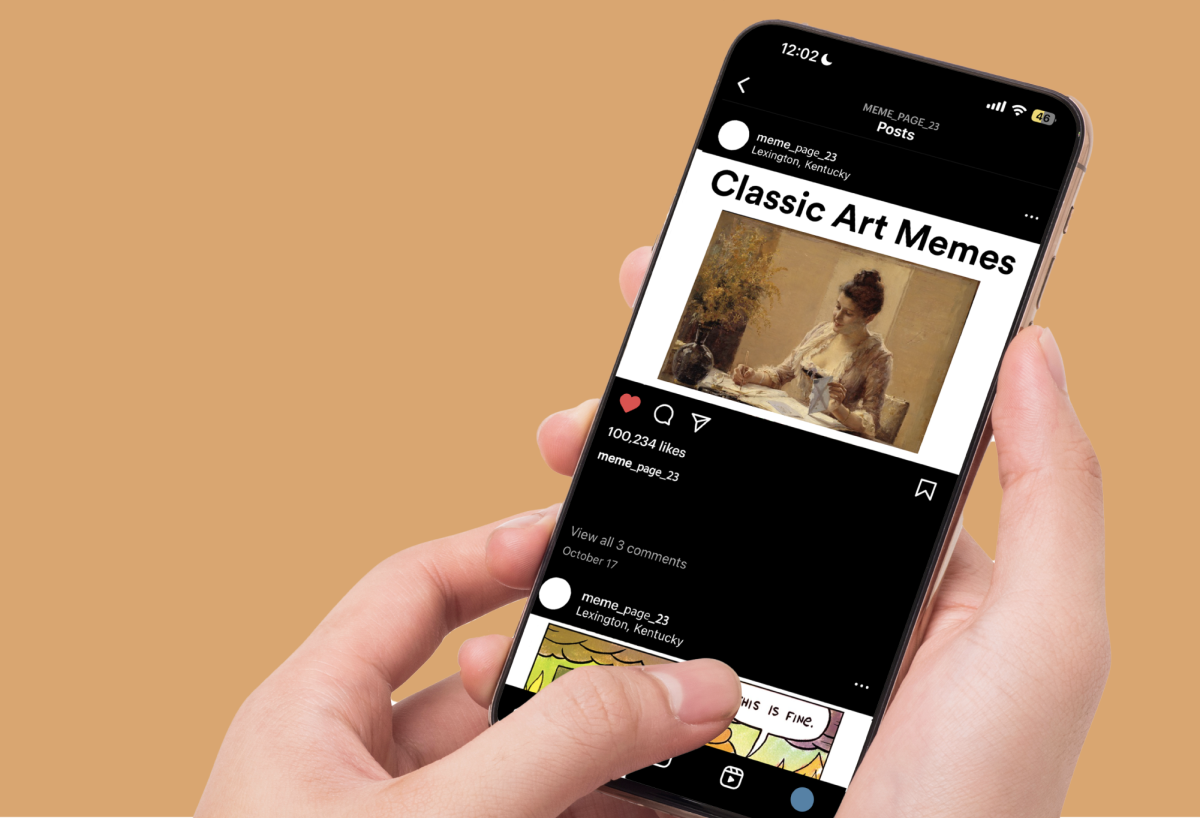Art has always been an integral part of culture. From cave paintings to Redbubble stickers, humans have found unique ways to add creativity to our daily lives, either to express ourselves or enhance our spaces and bodies.
Recently, art has taken on a new medium — memes. Though memes have been around for a while (or not very long at all, depending on what temporal scale you’re using), members of Gen Z have begun to use classic art pieces for humor and social commentary in ways unseen in prior generations.
I have been aware of this phenomenon since high school, when I first noticed a Fernando Botero painting gaining traction amongst my social circles. It was his 1964 “Pope Leo X” painting with a caption reading, “Y tho?”
With the pope’s bulbous face, distorted features and look of disdain, Botero created a piece of art perfect for our generation’s sense of humor, completely unserious and almost mocking in nature.
More recently, I’ve noticed these classic works of art pop up on my TikTok feed. Just yesterday, I saved a video detailing a creator’s “winter plans,” which entailed a series of photos from Victorian-era paintings where women are depicted lounging in decadent beds or sofas.
These pieces have not only surfaced as a means for humor or relatability. Some art works have become representative of greater societal issues or frustrations held specifically by women.
The most timely example of this has been Auguste Toulmouche’s 1866 painting, “The Hesitant Fiancee,” which has gained traction on TikTok primarily to showcase female anger. The painting depicts a lavishly dressed woman being attended to presumably on her wedding day. Despite these circumstances, she seems unhappy and looks as if she’s rolling her eyes.
Historically, this piece was significant because it was one of the first works of art that depicts a woman who is not happy to get married, challenging traditional notions of social expectations and feelings surrounding marriage for women.
Today, social media users have used the piece to voice dissatisfaction with bad experiences, particularly with men.
This growing use of art to portray emotions and unify people based on shared experiences is our generation’s unique way to bridge history and pop culture. It has allowed us to gain a new perspective on classic art pieces (or, in many cases, introduced us to these works), proving art’s subjectivity and relevance even centuries after these works were created.
Physical artworks have not been singled out in pursuit of memetic material. Older music, movies, books and other cultural mediums have also been employed for the purpose of making jokes and fostering relatability amongst young adults on social media.
Art, in all of its forms, has always existed for this purpose — self expression and broader interpretation. As the world and particularly younger generations become more reliant on technology, many fear that we will lose the creative elements unique to our species.
These small internet trends give me some hope.
Obviously, they don’t openly showcase art created by young people, but they do prove that art pieces are still relevant today and serve a purpose in society.
As the line between human and invention blurs, I hope we can still turn to these works to be reminded of our humanity and imagination.



























































































































































